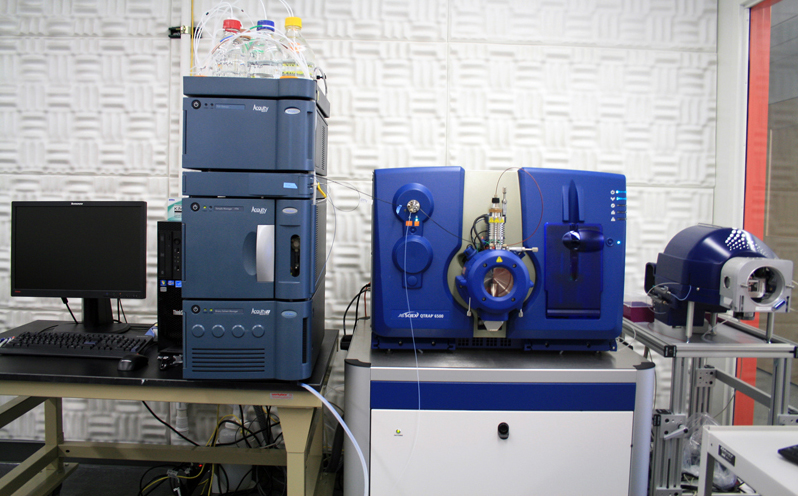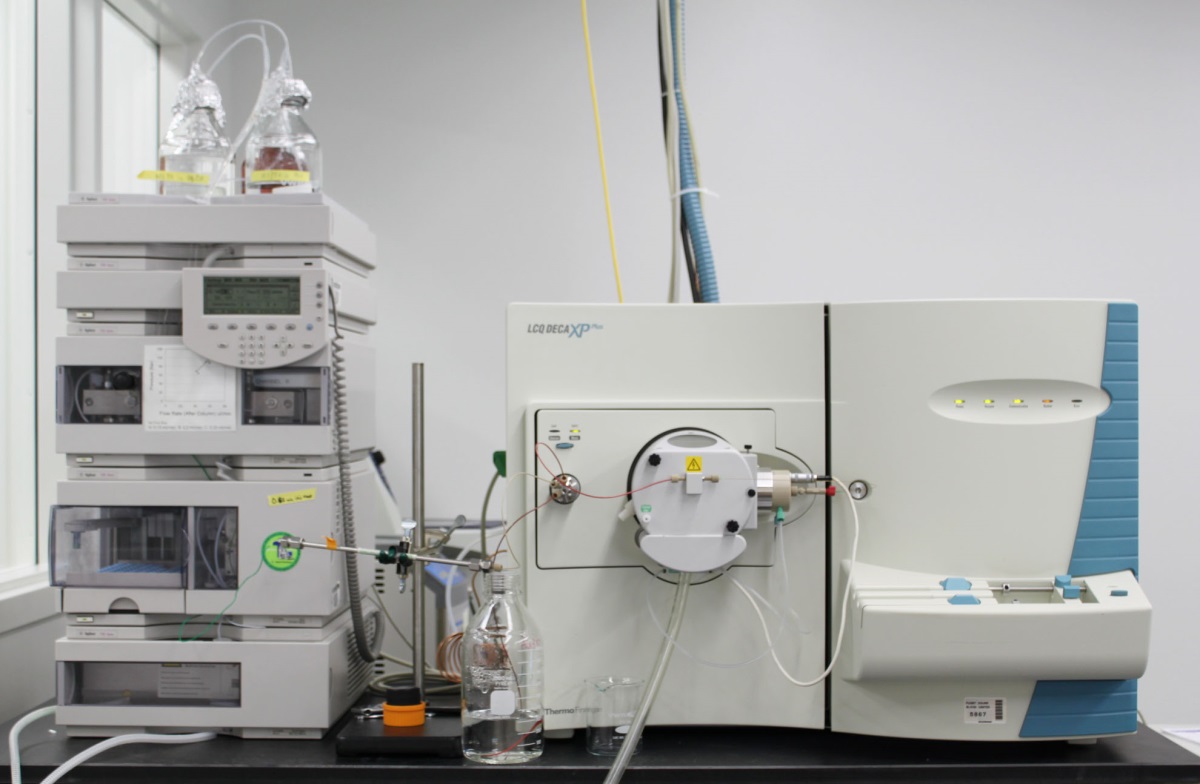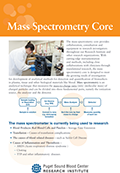Bloodworks Research Institute
Mass Spectrometry Lab
Our mission at the Mass Spectrometry Laboratory at Bloodworks Northwest is to aid researchers in their studies using mass spectrometry, proteomics, and metabolomics. With our state-of-the-art facility we provide sample analysis, training and consultation to investigators within the Blood Center as well as external collaborators. Our services include:
- Characterization and relative quantitation of post-translational modifications and mutations in proteins
- Quantitative measurement of mutations, oxidation, and cleavage of VWF in plasma
- Fibrinogen oxidation and degradation
- Protein profiling
- Quantitative analysis of metabolites
- Analysis of fatty acids and lysophospholipids
- Quantification of polyunsaturated fatty acids and their oxidation products
- Analysis of small molecular thiols and disulfides
- Untargeted metabolomics analysis of biofluids
Instrumentation
AB SCIEX QTRAP 6500 mass spectrometer system coupled with Waters ACQUITY UPLC I-Class System

The AB SCIEX QTRAP 6500 is a hybrid triple quadrupole/linear ion trap mass spectrometer which enables us to perform multiple reaction monitoring (MRM), neutral loss scanning (NL), precursor ion scanning (PIS), NL/PIS triggered information dependent acquisition (IDA), MS/MS with polarity switching, and MS3 for structural identification. The QTRAP 6500 system provides high sensitivity and wide linear dynamic range for quantitative analysis of analytes with m/z 5-2000. The QTRAP 6500 is coupled with a Waters ACQUITY UPLC I-Class, which provides maximized peak capacity, robustness, and the lowest carryover for separation of complex biological samples prior to mass spectrometry analysis. This new LC-MS system is mainly used for quantification of targeted peptides, metabolites, and lipid analysis.
ThermoScientific LTQ Orbitrap Velos hybrid FT mass spectrometer coupled with Waters nanoACQUITY UPLC System

Thermo linear ion-trap (LTQ) Orbitrap Velos Mass spectrometer provides ultra-high resolution and accurate mass for confident structural identification as well as molecular weight determination for intact proteins. This instrument is equipped with multiple fragmentation techniques including collision-induced dissociation (CID), Higher-Energy Collisional Dissociation (HCD), and Electron Transfer Dissociation (ETD) for Tandem Mass Spectrometry (MS/MS) analysis. Importantly CID and ETD generate complementary MS/MS spectra for confident identification of both post-translational modifications and peptide sequence. Samples can be introduced directly into the Electrospray ionization (ESI) or nanoESI source or coupled with Waters nanoAcquity ultra performance liquid chromatography (UPLC) system to perform nanoLC-MS/MS analyses for digestion mixture or complex samples. Generally we request 5 pmol of protein of interest or at least 20 μg total proteins of cell lysate or biological samples for analysis. However, if extensive method development is required we may request more.
Thermo-Finnigan LCQ Deca XP Plus mass spectrometer coupled with Agilent 1100 HPLC System

The Agilent 1100 HPLC system is interfaced with a Thermo-Finnigan LCQ Deca XP Plus MS detector via an electrospray ionization source. The HPLC system is equipped with a narrow bore reverse phase C18 column for routine analysis of peptides, small proteins and metabolites mixtures.
Software for Data Analysis
- Thermo Scientific Proteome Discoverer software with SEQUEST search algorithm for proteomic data search and analysis.
- Thermo Scientific SIEVE software for metabolomics and proteomics data analysis.
- AB Sciex PeakView software for the quantitative review and interpretation of mass spectrometry data.
- AB Sciex MultiQuant software for quantitative analysis of multiple analytes and samples at the same time
- AB Sciex LipidView software for lipid characterization and quantification.

Xiaoyun Fu, PhD
Associate Member
Director of Mass Spectrometry Laboratory
Research Associate
Professor of Medicine
Division of Hematology
University of Washington School of Medicine
Bloodworks Northwest
Research Institute
1551 Eastlake Avenue E, Suite 100
Seattle, WA 98102
Email: [email protected]
Phone: (206) 568-2250
Fax: (206) 587-6056
Service Contact
Yi Wang, Ph.D
Email: [email protected]
Phone: (206) 568-2243
Fax: (206) 587-6056
Protocols
Download the listed protocols as PDF documents.


